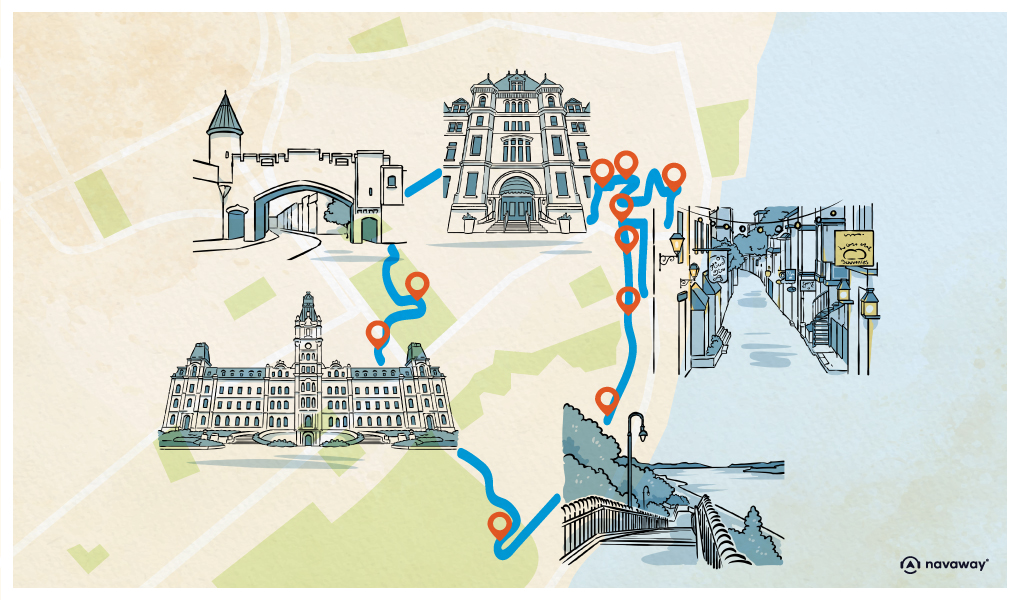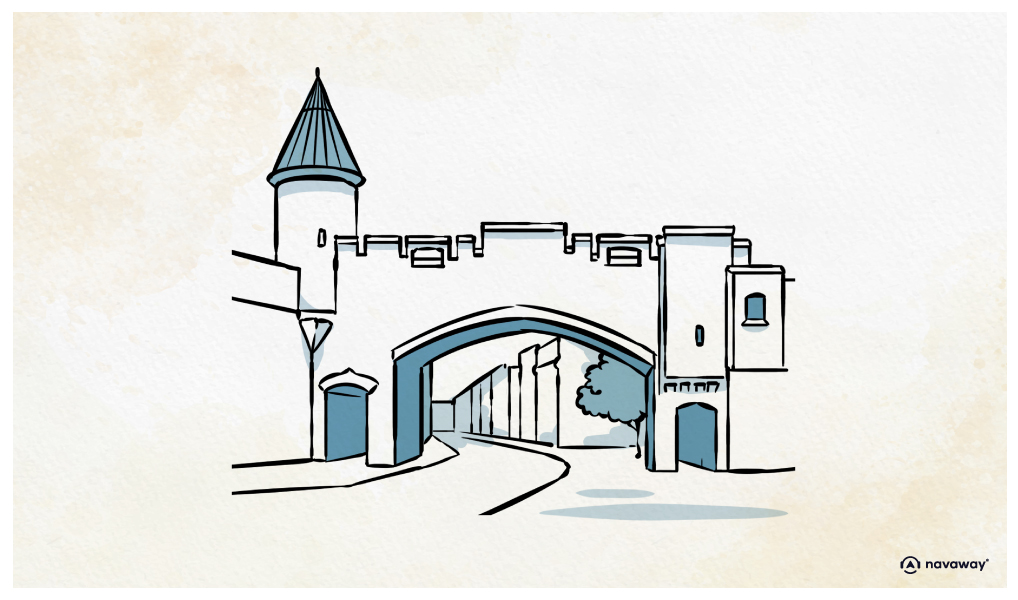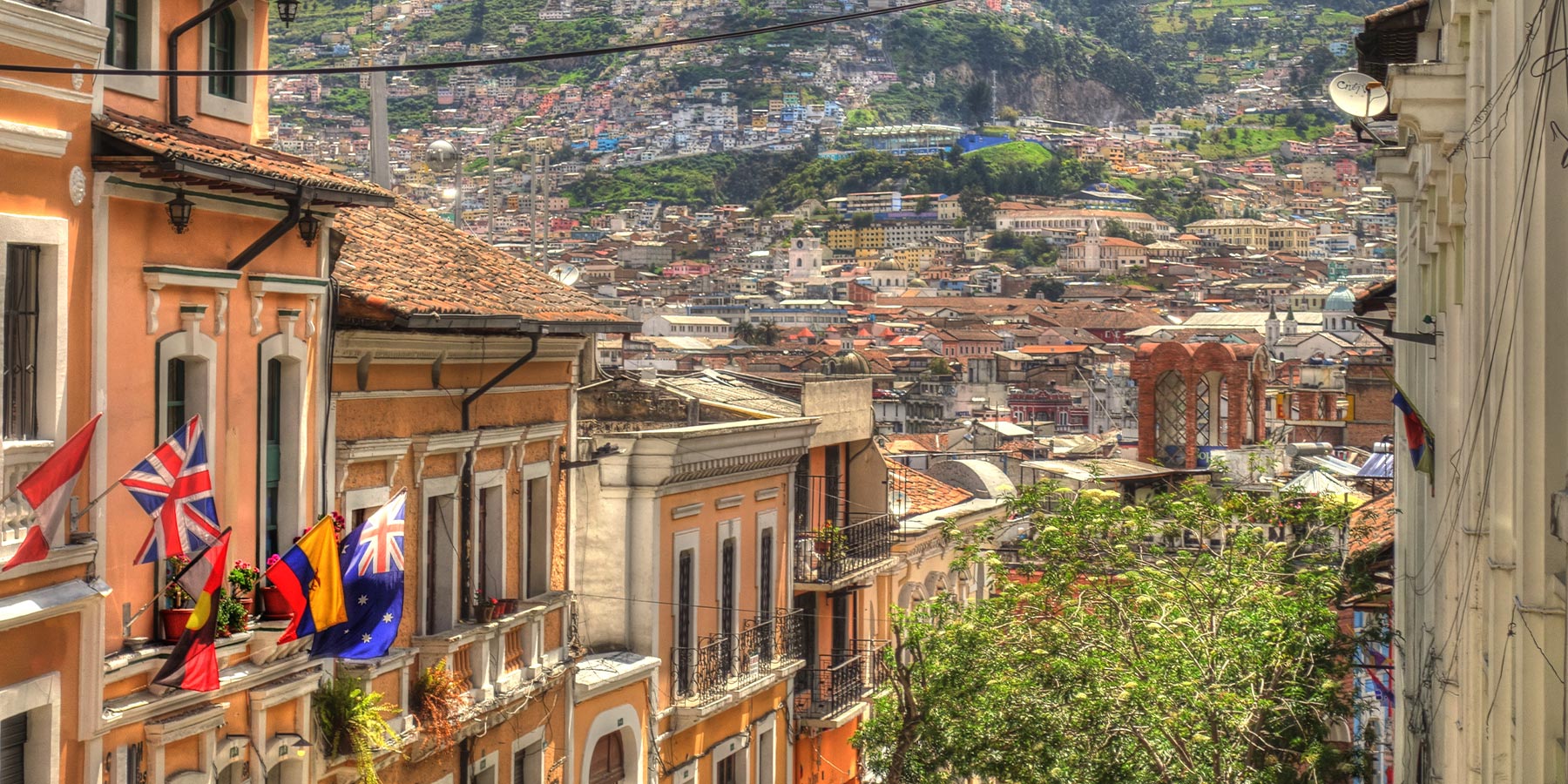
The Fortifications

This point of interest is available as audio on the tour: Visit Quebec, Whispers of the Past
You’re now walking along the ramparts, between two of the most iconic gates of Quebec’s old city walls, surrounded by cannons aimed at a long-gone enemy. This is the only fortified city north of Mexico! The 4-kilometre wall was built around the city by the French between 1690 and 1720, and later expanded by the British once they took control of Quebec. You entered through Kent Gate, the last one to be built under British rule, dating back to 1879. Unlike the other three gates, it never had a strategic role in defending the city. It was built for aesthetic reasons, as part of a restoration project led by the Duke of Dufferin, who preserved the historic value of the fortifications. The gate is named after the Duke of Kent, father of Queen Victoria, who financed its construction. The gate you’re heading towards is Saint-Jean Gate, the fourth version of the original Saint-Jean gate, rebuilt in 1939 in the same style as Saint-Louis and Kent Gates, which had been reconstructed 60 years earlier. Saint-Jean Gate is a key symbol of the city and one of its most photographed landmarks. On one side, it opens onto the lively Saint-Jean Street, full of shops and cafés, and on the other, it overlooks the beautiful Place d’Youville. Here you’ll find the 19th-century Capitole Theatre, known for its rounded façade and classed as a National Historic Site of Canada. Nearby is the Palais Montcalm, a stunning Art Deco concert hall built in the 1930s, and the sleek modern venue, Le Diamant. Together, they make Place d’Youville the ultimate hub for live entertainment. If you’re visiting in winter, put on your skates and enjoy the square’s outdoor rink. As you exit the ramparts, look to your left—you’ll spot the old cannon carriage warehouse, inside Artillery Park. Carriages are the structures that supported the heavy cannons. Built in 1812 during the war against the United States, this building initially served as a storage facility, and remained under British military control until they left in 1871. This arsenal was once a crucial part of Quebec’s colonial defense, when the city served as the region’s administrative and military hub. Today, it remains an important piece of Quebec’s historical heritage.


Discover Quebec with app
An interactive guide through the most beautiful streets, squares, and districts
24 fun audioguides full of historical facts, anecdotes, and legends





Comments